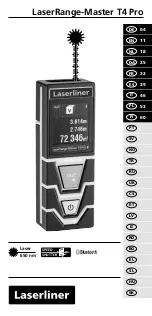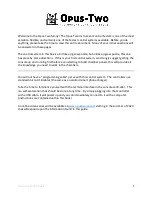
S p i r o m e t e r
Safety
2
®
displayed on your computing device. From the graphed data students can measure
tidal volume, forced expiratory volume, and other important lung volumes and
capacities.
Safety
Read the instructions before using this product. Students should be supervised
by their instructors. When using this product, follow the instructions in this
manual and all local safety guidelines that apply to you.
Do not share mouthpieces.
In medical settings, pulmonary function tests are performed under the
supervision of a medical professional. When using a spirometer without medical
supervision, use extra caution. A person with a medical condition that may be
affected by a pulmonary function test should not use the PASCO Spirometer.
Discontinue use if the subject encounters breathing difficulty or discomfort.
How it works
When the test subject breathes through the mouthpiece, a screen in the mouthpiece
induces a minute resistance to the air flow. This resistance leads to a pressure
differential across the screen that is measured via two air lines that lead to a
differential pressure transducer in the electronics enclosure. The Spirometer
contains onboard reference data of differential pressures from known flow rates (a
non-linear relationship). It determines the test subject's flow rate by comparing the
measured differential pressure to the stored reference data. It calculates volume
exchanged by integrating the flow rate over time.
Sensor Setup
Connect a mouthpiece to the handle; note the small pin on the mouthpiece and the
aligning notch on the handle. Connect the electronics enclosure of the sensor to
your PASPORT interface.
(When you remove a used mouthpiece, pull it straight out from the handle without
rocking or wiggling it.)
Data Collection
•
For information about collecting, displaying, and analyzing data, refer to the
Online Help System for the PASCO Data Collection Software.
Your PASCO interface and data collection software will record Flow Rate and Max
Flow Rate (in liters/second) and Total Flow (in liters), at a sampling rate of 50 Hz.
Flow Rate
is the rate at which air flows through the mouthpiece. Air expired from the
lungs is measured as positive flow, inspired air as negative.
Max Flow Rate
is the
maximum exhaled flow rate measured during the test. The sensor calculates
Mouthpiece and
Handle


























